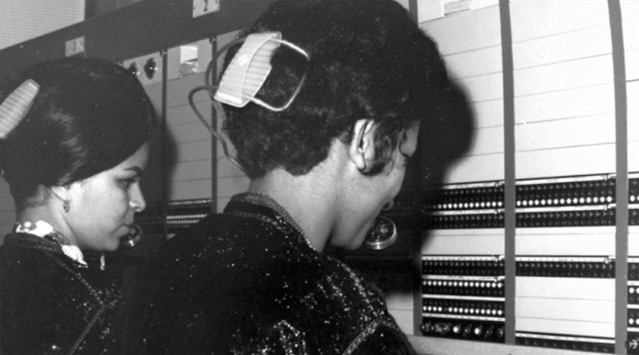MANUAL TELEPHONE EXCHANGE

Early telephone use was restricted to only a few subscribers. Communication was initially between two devices operated by the same user. Later this was extended to devices within the same building and afterwards out to buildings that were distant from each other, until we were able to establish communications across the whole planet.
Rural Telephony
Rural networks are characterised by a low population density. Traffic is limited and very disperse; also there are great distances between subscribers and telephone exchanges.
Services in rural environments were maintained and managed locally by a family member linked to the telecommunications company using a contract similar to that for sub-post offices. This person was in charge of the exchange, the switchboard and the manual public telephone. Inhabitants of the area had to go through him in order to use the telephone service.
Today, rural services use modern methods with automatic telecommunications devices. These include, amongst others: TDM (which stands for Time-Division Multiplexing), but also Hubs, Freestanding Cables (that is overhead cables connecting end users to the telephone network), or RSM (Remote Subscriber Modules), which are units that concentrate traffic from low density areas.
Manual telephone exchanges
When telecommunication services were first opened to the public, each telephone in the system had to be permanently connected with the telephone exchange. Consequently, users had to “subscribe” to the services of the corresponding company.
In order to offer this service, use was made of plug boards or switchboards, such as the ones you can see before you. These plugboards were equipped with a number of socket terminals directly connected to each subscriber and pairs of patch cords with jacks at either end to interconnect subscriber lines. As the number of users grew, it became necessary to group them together geographically in various telephone exchanges, popularly known as switchboards. It also became necessary to create links between these switchboards in order to connect subscribers. In charge of the switchboards were the operators, usually women, who were fundamental in the history of the manual telephone.
Multiple Extensible Telephone Exchanges
As the number of Moroccan subscribers increased, switchboards (which had a maximum capacity of a hundred subscribers) no longer satisfied the needs of users. In response to this, it became necessary to create multiple extensible exchanges, for calls, which are those you can see in front of you.

